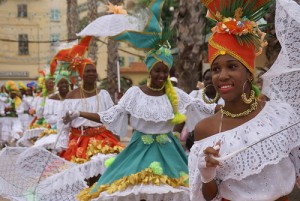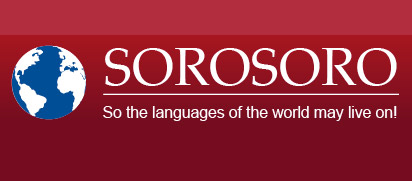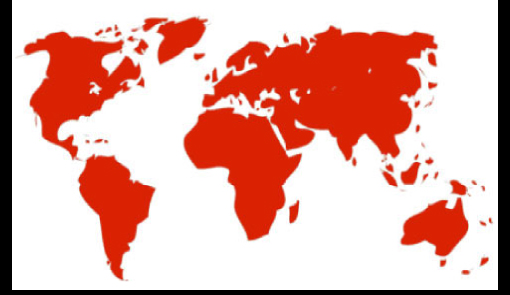Print  |
|


Questions on the genesis of Creole languages
Posted by Marie-Christine Hazaël-Massieux on June 23, 2011
By Marie-Christine Hazaël-Massieux, professor of linguistics at the university of Provence, author of Textes Anciens en Créole Français de la Caraïbe : Histoire et Analyse (« Ancient Texts in Caribbean French Creole: History and Analysis »), Publibook, 2008.

What does the term creole mean?
The ambiguity of the term creole must be pointed out. It is often understood as a synonym of « mixed language » – a difficult concept to define, incidentally – and one forgets that the adjective first qualifies any « product » that was generated in the islands from foreign parents: that explains why one might refer to « creole cattle », « creole pigs », or by the same token, to « Creole children » (White creoles, Black creoles).
So at first, the term creole does not mean « mixed » at all, but only underlines that the parents/ancestors weren’t originally from the colony.
Masters & slaves
In many European colonies, the 16th century through to the 18th century saw the rise of Creole languages (languages of the Creole populations), which, according to where the colonists came from, ended up being called Portuguese Creoles, English Creoles, French Creoles, etc.
French-based Creoles were all born in situations of intense linguistic contact involving languages that were spoken by the masters and their slaves. Arriving from various regions of Africa, the slaves spoke a very large number of languages that prevented them from understanding each other.
Besides, the slaves fulfilled new and diverse duties as the decades went by: farm hand to begin with, but also semi-skilled workers in the different areas considered useful to the life of the colony, housework servants in the grand’case [« big hut »] and sometimes even gradually emancipated, merchants and dealers to handle the town owner’s business – which explains the increasing complexity and richness of the local language of communication, although in some spheres it never entirely took over French.
The newly arrived non-Creole were also forced to learn the « island speech », which consequently underwent rapid changes. It became a means of communication for the whole of society (missionaries, masters, merchants…) as society kept developing. And it was first referred to as « Creole » at the end of the 18th century.
If the French origins of Creole languages often appear easier to prove than the influence, although undisputable, of the languages of the slaves, it is because:
- in seeking a common language of daily communication between master and slaves, the social domination of the master made their language become the language of communication, in the form of a broken French also used for exchanges among the slaves in cases where they did not share a common African language;
- social advancement then appeared to imply the use of French (i.e. the role of women, simultaneously servants, nannies and concubines) and the slaves sought command of the French language in hope for emancipation.
- the main scriptwriters of the local idiom spoke French, thus their interpretations of forms they heard from the slaves were French-oriented.
Ancient texts
Written documents show the existence of Creole languages as soon as the beginning of the 18th century in the Caribbean, and a little later in the Indian Ocean, although not yet clearly distinct from one island to another within a given geographic area.
What’s more, these languages, and especially the African languages, differ between the Caribbean and the Indian Ocean, which then partly explains the existence of different Creoles.
The written accounts of this period of genesis are precious as they help follow the evolutions of these languages along the years and the centuries: originally very basic exchange gradually became an elaborate form of enunciation including all necessary functions; the language took shape over the centuries with the gradual adjustments required to fulfill the need for communication.
The long maturing of Creole languages
Each Creole’s defining features began to settle in the course of the 19th century. Vocabulary, essentially French-based, opened to new words that often bore various African origins, but also Malagasy and even languages of India, for the Creoles of the Indian Ocean. And as always, whether at semantic or formal level, the new words continued their evolution over the centuries.
The most significant, however, and the most fascinating really is to witness the development of an original and functional form of grammar born precisely in these situations of linguistic contact, while everyone is trying to understand the language of the other. The grammatical units that we’re able to isolate and analyze, when trying to compare them with previously attested forms, somehow appear deeply changed. Often they can hardly even be associated to one language more than the other because of the higher-paced evolution of grammatical forms in contrast to lexical forms. Where exactly do grammatical morphemes such as « ap », « ka » (progressive), « ti » (past), « ké » (future, replacing the original « va »), « i » (modal or aspectual in Réunion Creole), etc. – come from? Solutions associating these forms to French forms currently in use are appealing, yet most probably insufficient.
The systematic analysis of ancient texts uncovers this evolution all the way to modern Creole languages – complete languages, the use of which can express just about anything for whoever speaks them in command of the lexical and grammatical forms they are made of.








